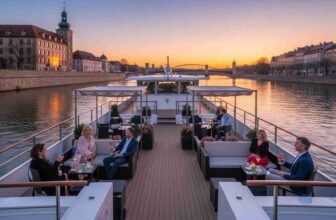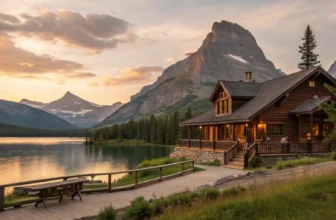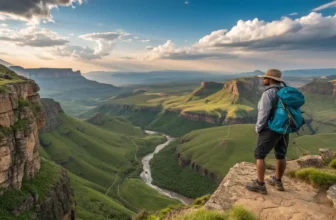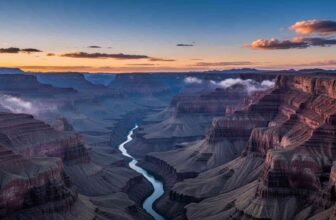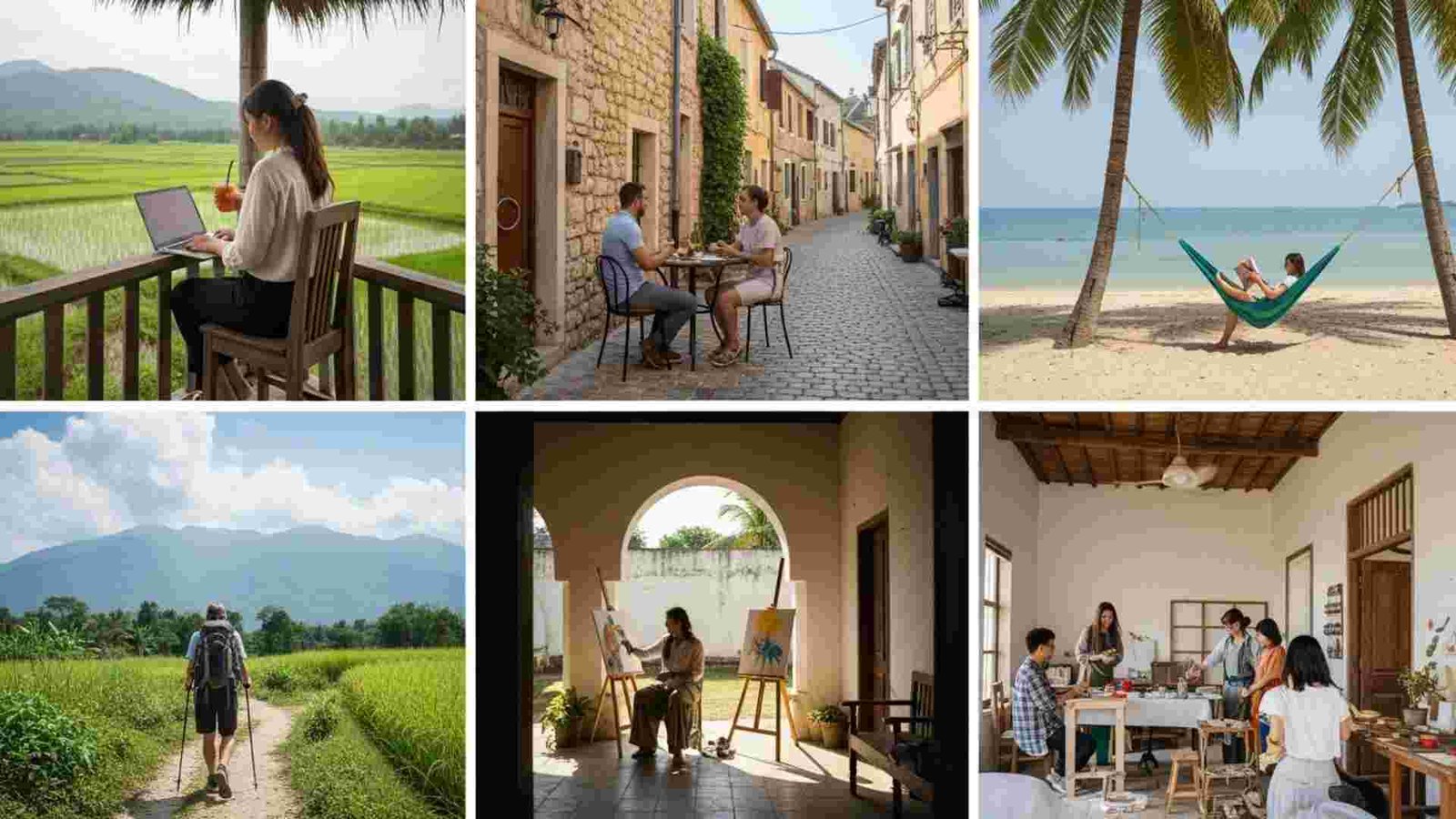

Shoulders up by your ears, mind buzzing even on vacation days. At some point, rushing through airports and cramming in sights stopped feeling like freedom and started feeling like more work. That’s why slow travel matters right now – staying long enough to learn the rhythm of a place, not just its highlights.
A simple room for a month, a favourite café, a familiar walking route; that’s where real recovery hides. In the pages ahead, you’ll find affordable corners of the world where your nervous system gets to exhale and stay there longer.
1. Chiang Mai, Thailand
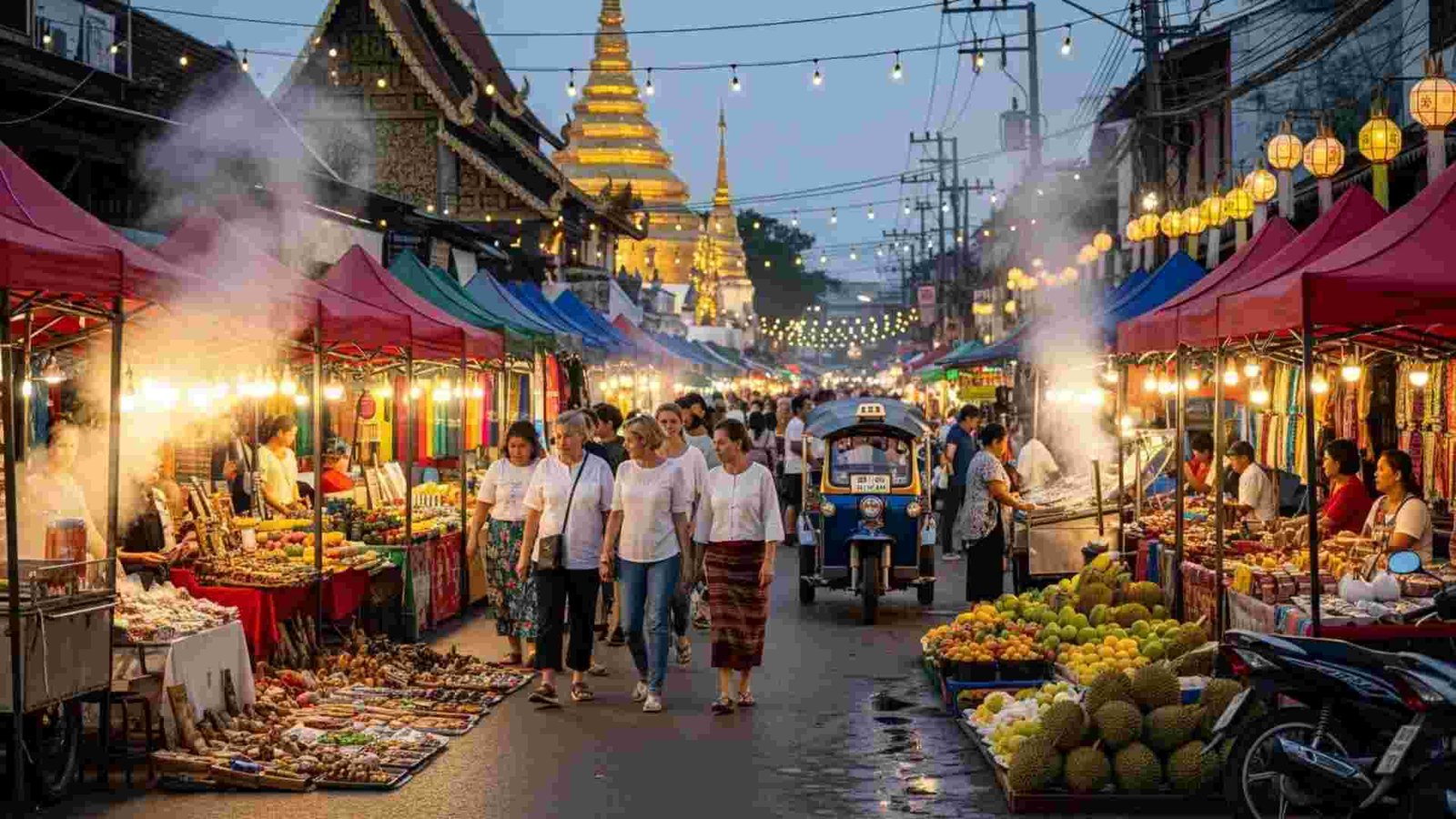
And this place really has the vibe of “slow travel done right.” Nestled in northern Thailand, Chiang Mai is much quieter and more relaxed than Bangkok. The city sits on the Ping River, surrounded by green hills — so you’re never far from nature. The old city is surrounded by ancient walls and moat, with more than 30 temples inside the centre. If you stay a month you’ll find your rhythm: morning temple exploration, an afternoon café, an evening night-market wander.
Accommodation and everyday costs are very affordable compared to many tourist hubs. In recent guides, staying in the old city and eating like a local makes a big difference. Because of this you’ll be able to relax rather than constantly worry about budget. And there’s plenty to do: from hiking in the surrounding hills, visiting waterfalls or taking a cooking class, to simply switching into a slower pace, absorbed in local life.
Practical Information:
- Peak/Off-peak seasons & weather: Best time to go is October through April (warm days, cooler nights ~25 °C day; dipping to ~15 °C at night). Monsoon season runs roughly June–September, so fewer crowds and better deals.
- Best ways to reach and explore: Fly into Chiang Mai International Airport; inside the city you can rent a scooter, use Grab/taxi apps or simply walk in the Old City.
- Ideal duration of visit: A month is perfect — plenty of time to immerse, not just pass through.
- Must-try local experiences: Sunday Night Market on Tha Phae Walking Street. A Thai cooking class with market visit. Cafe-hopping in the Nimman neighbourhood. Hiking in nearby national parks.
- Budget considerations: Stay in a mid-range guesthouse or serviced apartment; eat street food and use local transport. According to budget travel guides, Chiang Mai is significantly cheaper than Bangkok for both hotels and meals.
- Cultural etiquette tips: Dress modestly in temples (shoulders & knees covered). Remove shoes when entering temple buildings. Respect monks (e.g., don’t hug them or touch their robes).
- Photography opportunities: Sunrise from Doi Suthep, lantern-lit night markets, temple courtyards with golden chedis, mist over rice terraces in adjacent countryside.
2. Oaxaca de Juárez (Oaxaca), Mexico
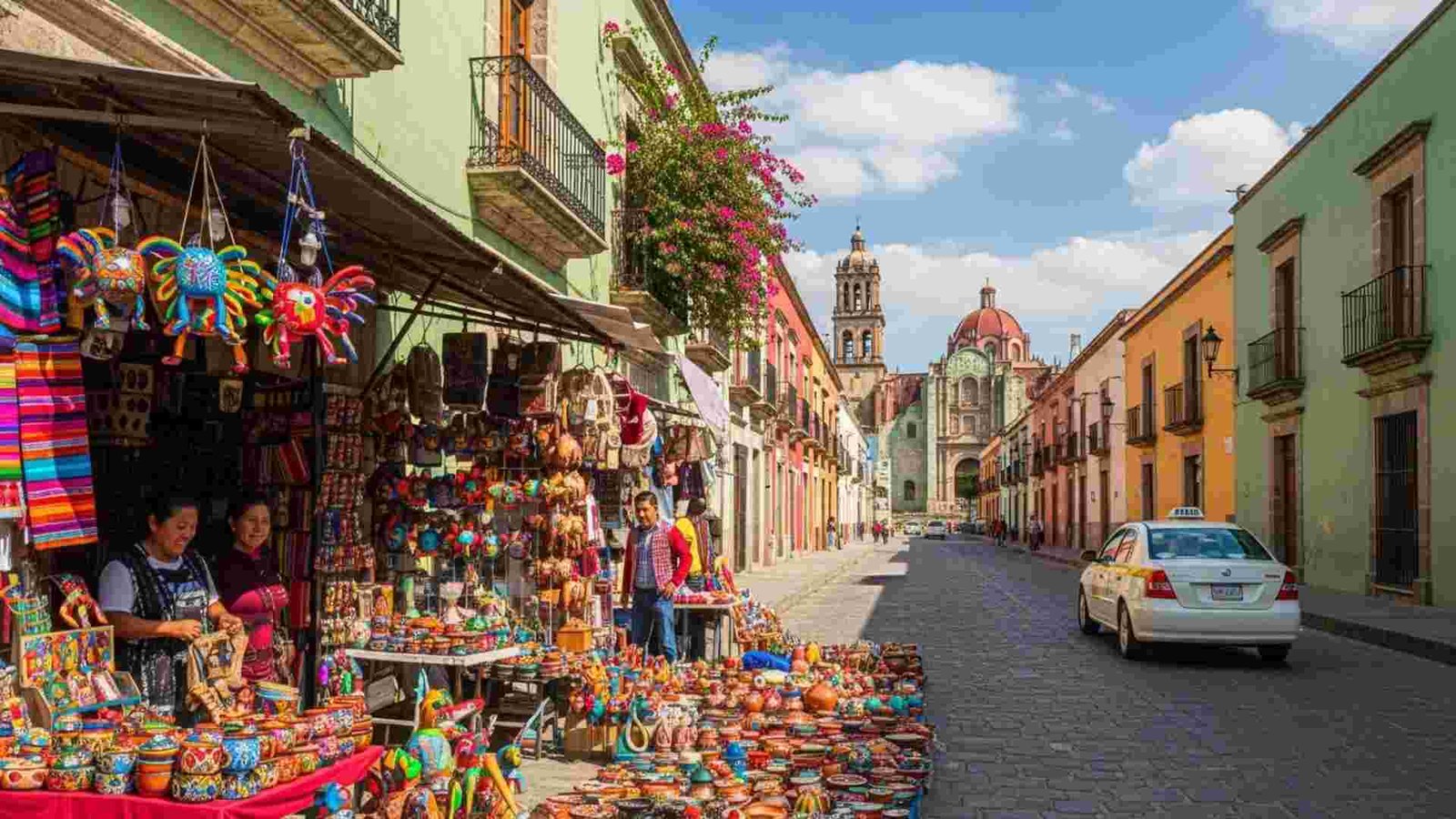
Colonial architecture, indigenous culture, food that makes you want to linger. The historic city centre is a UNESCO world heritage site and you’ll find markets, art workshops and street life that pulses. There are artisan villages nearby, mezcal distilleries, and plenty of depth for a slower-paced stay. For example, you can spend a morning wandering the Zócalo, attend a weaving workshop in the afternoon, and settle into a rooftop café as the sun dips. And there’s just something about the warm light on the orange-stone walls that makes you decompress.
According to cost-data estimates, a one-month stay for one person in Oaxaca de Juárez averaged about US $1,527 for a month in earlier reporting. Even if costs have ticked up a little by 2025, that gives you a realistic ball-park: you can make a comfortable extended stay without spending an arm and a leg. The food, locally sourced mezcal, artisanal crafts, the market culture — everything adds to the experience. One of the must-try things is visiting the artisan towns like Teotitlán del Valle (weaving) or heading out to Hierve el Agua — a natural rock formation that looks like a waterfall.
Practical Information:
- Peak/Off-peak seasons & weather: Peak is November to March (dry season). Rainy season is June–October (fewer tourists, greener landscapes).
- Best ways to reach and explore: Fly into Oaxaca City (OAX). Once based in town, use local buses or rent a scooter/moto for nearby villages. For day trips, join local tours.
- Ideal duration of visit: A month gives time for city and surrounding region.
- Must-try local experiences: Artisan village visits, mezcal tasting tours, cooking Oaxacan cuisine (mole = must), market-hopping, street food at the Mercado 20 de Noviembre.
- Budget considerations: With month-long stays, look for apartment-style rental or guesthouse with kitchen so you can self-cater some meals.
- Cultural etiquette tips: Be respectful visiting artisan communities — ask before photographing people, buy something if you enter a workshop. In churches cover shoulders.
- Photography opportunities: Golden hour in the historic centre, market stalls bursting with colors, artisan weavers at work, mezcal barrels.
3. Medellín, Colombia
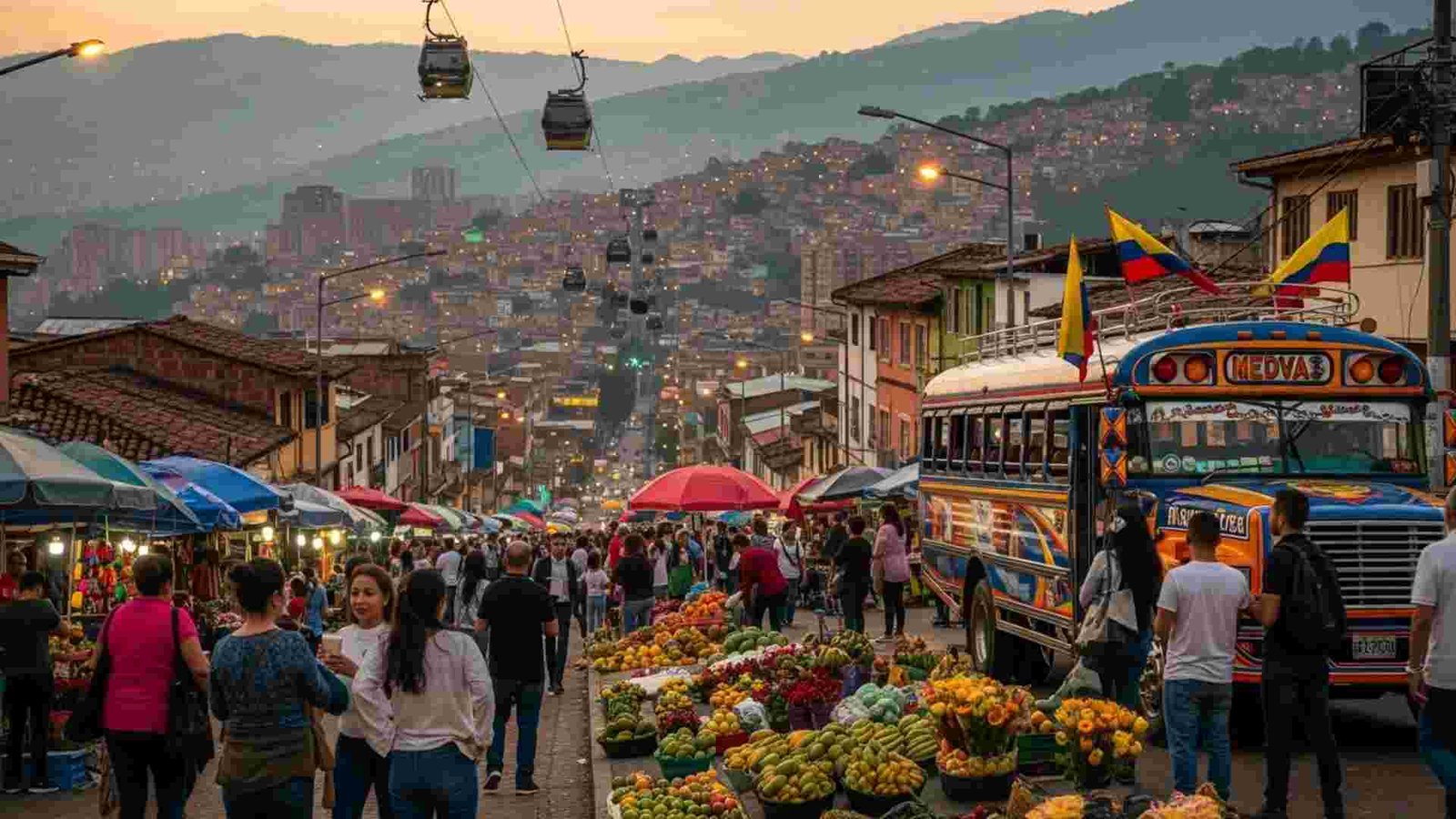
Medellín is a city that invites you to stay, not just arrive and leave. Nestled in the Aburrá Valley in the Andes, it’s surrounded by steep hills — giving you dramatic vistas and a sense of being anchored in nature, even while in a city. The transformation here in recent years is real: new public transport (metro + cable cars) link hillside communities, making exploring more intuitive. You’re not just a tourist; you’re in a city that locals live and breathe. And staying a month allows you to feel that rhythm — coffee in the morning, ride the metro up to Parque Arví, evening strolls through El Poblado or Laureles.
. While exact month-long cost numbers are harder to pin down, Colombia generally offers very good value compared to North America or Europe. And Medellín is popular with digital nomads for that reason — good infrastructure, good weather (eternal spring climate), and interesting local culture. It’s not perfect (as any city), but for slow travel: you’ll find neighbourhoods to settle into, local cafés, street art tours (especially in Comuna 13) and a social scene that keeps things lively without being exhausting. One recent article calls Medellín among the world’s top trending destinations.
Practical Information:
- Peak/Off-peak seasons & weather: Medellín famously has “eternal spring” weather: average daily temps around 22-24 °C (72-75 °F) year-round. Rainy months are April-May & October-November.
- Best ways to reach and explore: Fly into José María Córdova International Airport (MDE). Use the metro + cable cars; for neighbourhood hopping use taxi/ride-share.
- Ideal duration of visit: One month gives you time to live like a local, not just sight-see.
- Must-try local experiences: Visit Comuna 13 with its street-art & cable car lift; take a day-trip to Guatapé (colour town + lakes); join a coffee plantation tour nearby.
- Budget considerations: Look for serviced apartment in neighbourhoods like Laureles or El Poblado; eat in local spots rather than tourist restaurants; consider coworking café for productivity if you’ll work remotely.
- Cultural etiquette tips: Colombians are warm and polite — greet with “buenos días” etc. In nightlife, know areas and act aware; ask locals for safe neighbourhoods.
- Photography opportunities: Cable-car view down into the valley; street art walls in Comuna 13; city lights after dusk from Mirador.
4. Tbilisi, Georgia
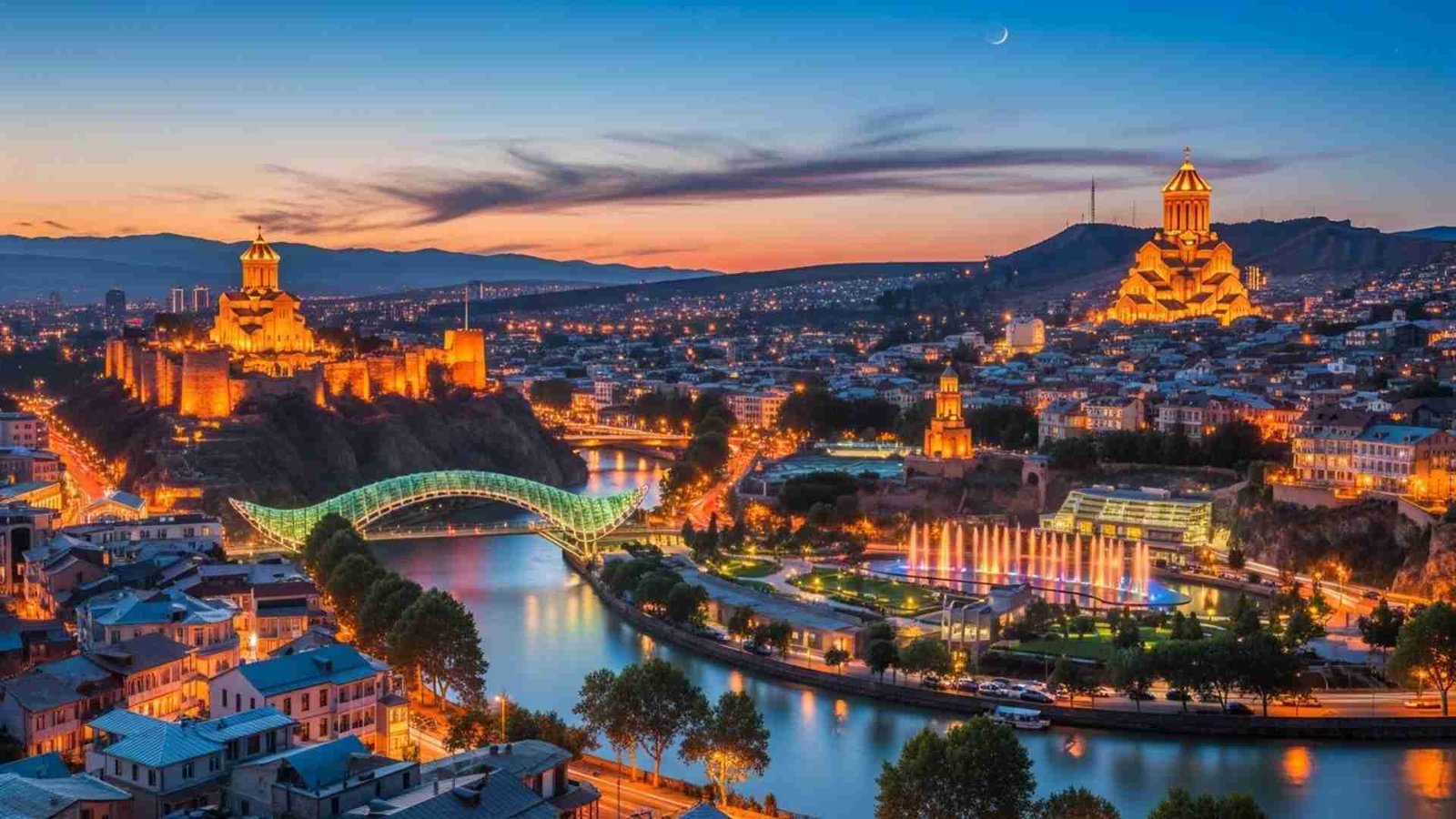
Tbilisi is special because it blends deep history and a modern energy in a relatively compact, walkable city. You’ve got the cobbled lanes of the Old Town with its wooden balconies and colourful architecture, and then the newer parts with funky art and cafés. Staying a month gives you space to find your favourite coffee shop, your local grocery, wander up to Mt Mtatsminda for views over the city’s red-roofs, and settle into the slower pulse of life here. One travel guide describes Tbilisi as “affordable and memorable.”
Georgia uses the lari (GEL), and everyday costs (accom-modation, food, transit) are favourable compared to most European capitals, making a longer stay realistic. Because English is increasingly spoken and the city is used to foreigners, you’ll feel comfortable yet still immersed. Culturally, Georgia is off the beaten track for many, which means less tourist-rush and more local authenticity. You can spend mornings in a sulphur-bath district (Abanotubani), afternoons tasting Georgian wines (which the country is famed for), evenings listening to folk music in a small pub.
Practical Information:
- Peak/Off-peak seasons & weather: Best time is late spring (May) and early autumn (September) when weather is mild. Winters can be cold and snowy; summers warm.
- Best ways to reach and explore: Fly into Tbilisi International Airport (TBS). In-city: bus, metro are cheap; many things walkable in Old Town & nearby.
- Ideal duration of visit: One month is perfect to oscillate between city life and day-trips into nature (e.g., Kazbegi).
- Must-try local experiences: Sulphur-bath in Abanotubani; visit wine-cellars and sample Georgian wines; hike up to Narikala Fortress for panorama.
- Budget considerations: Seek apartment rentals with kitchen to prepare some meals; local markets are economical.
- Cultural etiquette tips: Georgians are hospitable; it’s polite to toast properly at meals (“Gaumarjos!”). When entering a church, dress modestly.
- Photography opportunities: Old Town at dusk, baths district domes, city views from above, dramatic landscapes just beyond the city.
5. George Town (Penang), Malaysia
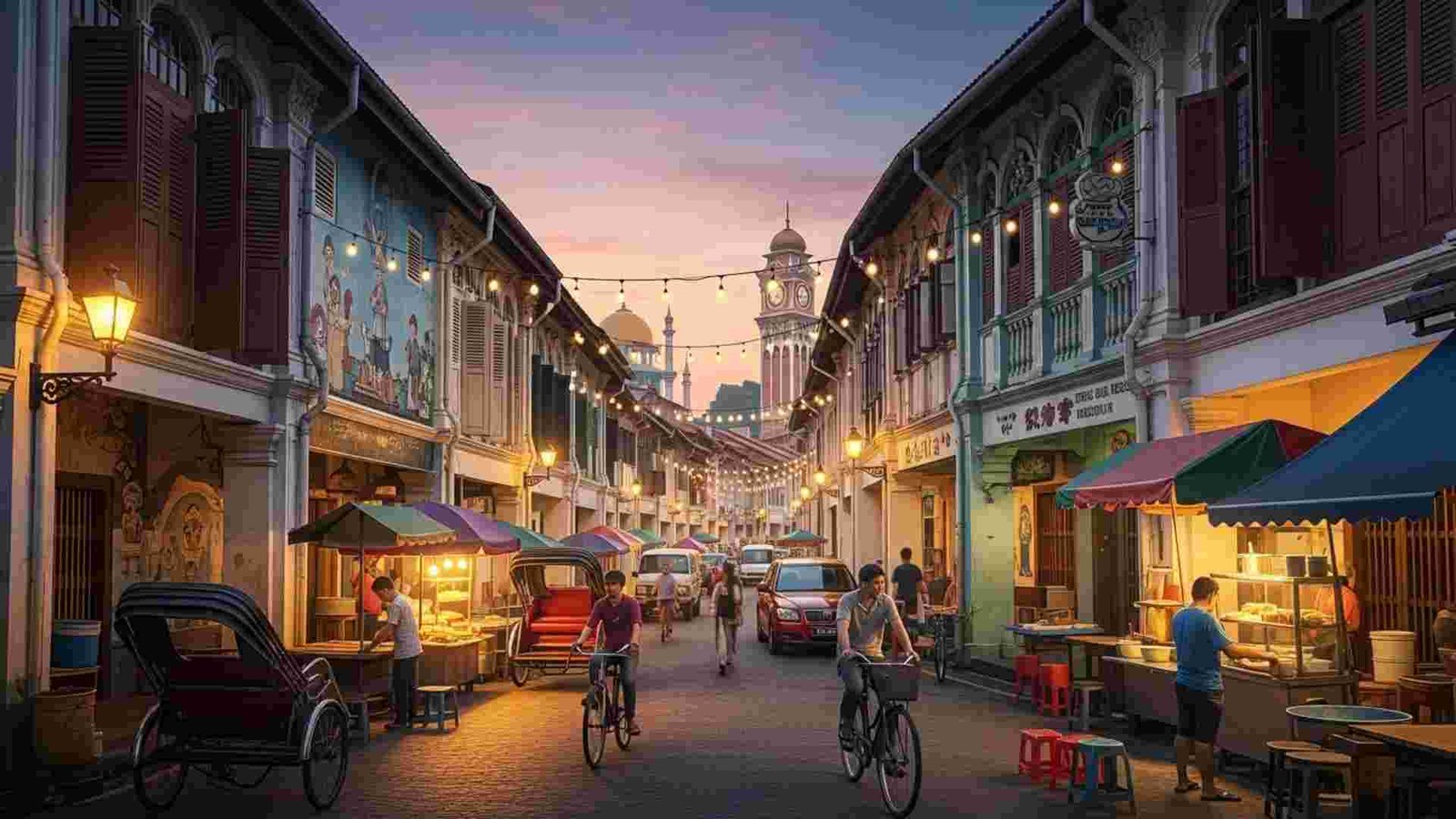
George Town in Penang is one of those places where culture, heritage and modern life merge. The city’s heritage zone is filled with colonial architecture, Chinese shophouses, colourful street art (yes — the mural trails are a thing), and plenty of excellent food cornered in hawker stalls and cafés. Staying a month means you’re not just ticking off the murals — you’re hanging out in your favourite coffee spot, getting to know the street food scene, maybe even chatting with vendors you’ll recognise. And you’ll have time to explore the broader island beaches, hills, plantations.
Malaysia uses the ringgit (MYR) and Penang offers good value compared to many Western countries. Long-stay rentals are possible and food from hawker centres is extremely economical. The cultural depth is strong: the local mix of Malay, Chinese, Indian, Peranakan heritage gives you a layered experience — festivals, architecture, food — all rich. For slow travel, this kind of cultural immersion is gold. And access is good: Penang International Airport and bus/ride-share services across the island.
Practical Information:
- Peak/Off-peak seasons & weather: Tropical climate year-round: expect hot humid days (30 °C+/86 °F) and monsoon rains Nov–Jan. Off-peak rainy season might bring better deals.
- Best ways to reach and explore: Fly into Penang International Airport (PEN). From George Town base, use local buses, Grab/ride share, or rent a scooter if you’re comfortable.
- Ideal duration of visit: A month gives time to move beyond sightseeing and into living.
- Must-try local experiences: Hawker-centre dinners (e.g., Gurney Drive); heritage walking tour of George Town (UNESCO zone); day-trip to Penang Hill or the Botanic Gardens.
- Budget considerations: Look for 1-bed rentals in residential zones; frequent hawker meals keep food cost low; transportation is cheap.
- Cultural etiquette tips: Respect places of worship; Mind your shoes when entering homes or certain temples; At food stalls, queues are polite — join the line, take the ticket.
- Photography opportunities: Street art murals (by Ernest Zacharevic and others), heritage architecture, vibrant food scenes, sunset at the coast, local markets early morning.
6. Hoi An, Vietnam – Lantern town, beach base, rice-field reset
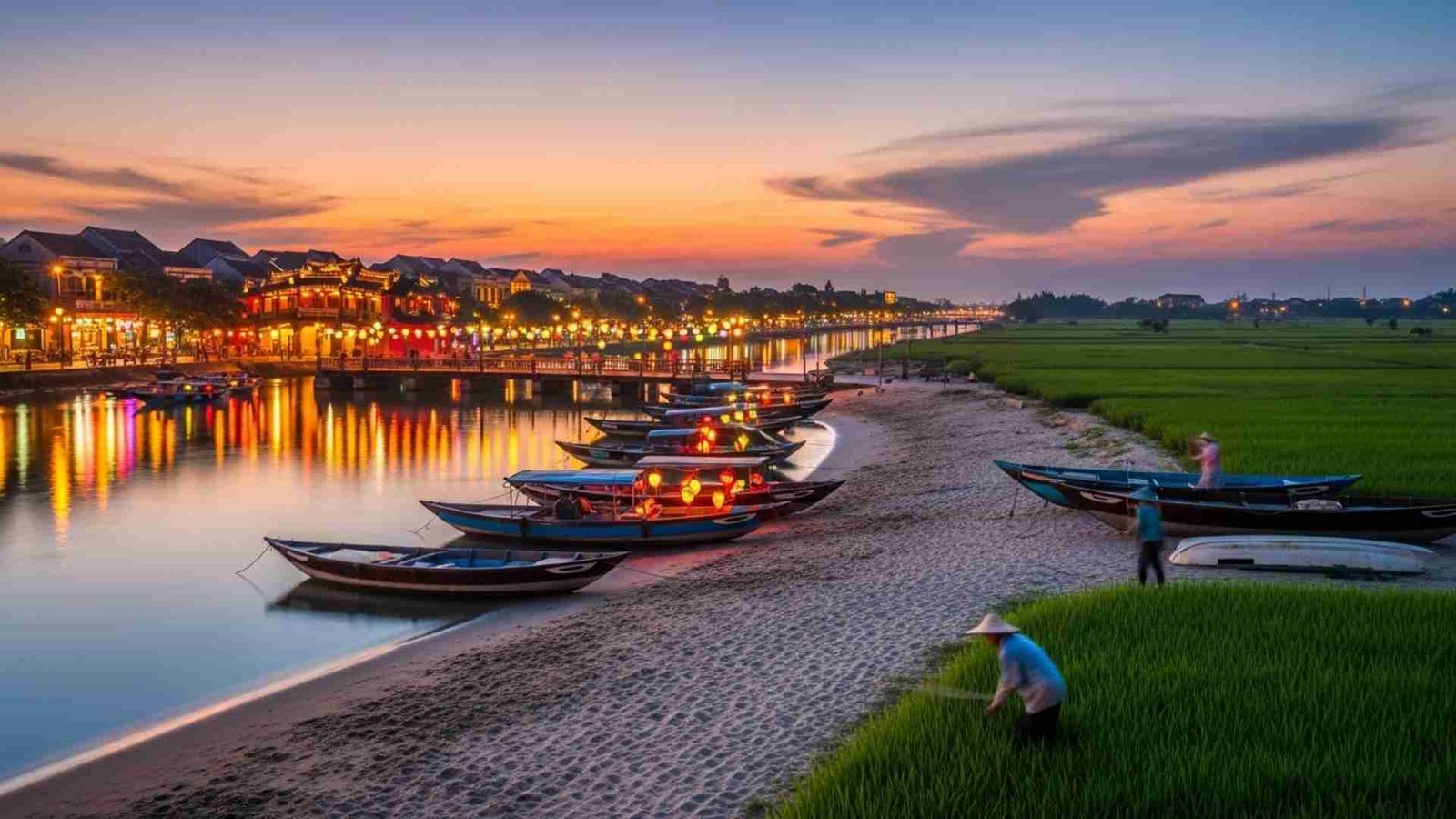
Hoi An isn’t just a pretty lantern backdrop. Stay a month and you start to notice the rhythm behind the postcard; tailors remembering your name, the same fruit seller at the corner, the way traffic noise drops as you pedal out into the rice fields. The old town is UNESCO-listed, and once a month the electric lights are cut and the streets glow only with lanterns, turning the Thu Bon riverfront into something that feels almost unreal.
homestays tucked among rice paddies and coconut groves, or simple guesthouses near An Bang Beach, where your morning routine can be “coffee, swim, work, sunset.” Hoi An has a clear dry season from roughly February to August with hot, sunny days, and a wet season from September to January when floods sometimes hit central Vietnam hard, including recent events that submerged parts of town and disrupted travel. Planning around that wet period matters if you’re there to decompress.
Practical Information:
- When to Go: February–April (dry, cooler, fewer storms). September–January if you don’t want monsoon flooding.
- Where to Base Yourself: Rent a bicycle for daily life. Scooter for countryside + beaches. Walk Old Town (vehicle restrictions at certain hours).
- Must-Do Slow Travel Moments: Lantern-only nights in Old Town. Morning coffee by the river. Tailor-made linen clothes.
7. Cuenca, Ecuador – High-altitude hometown in the Andes
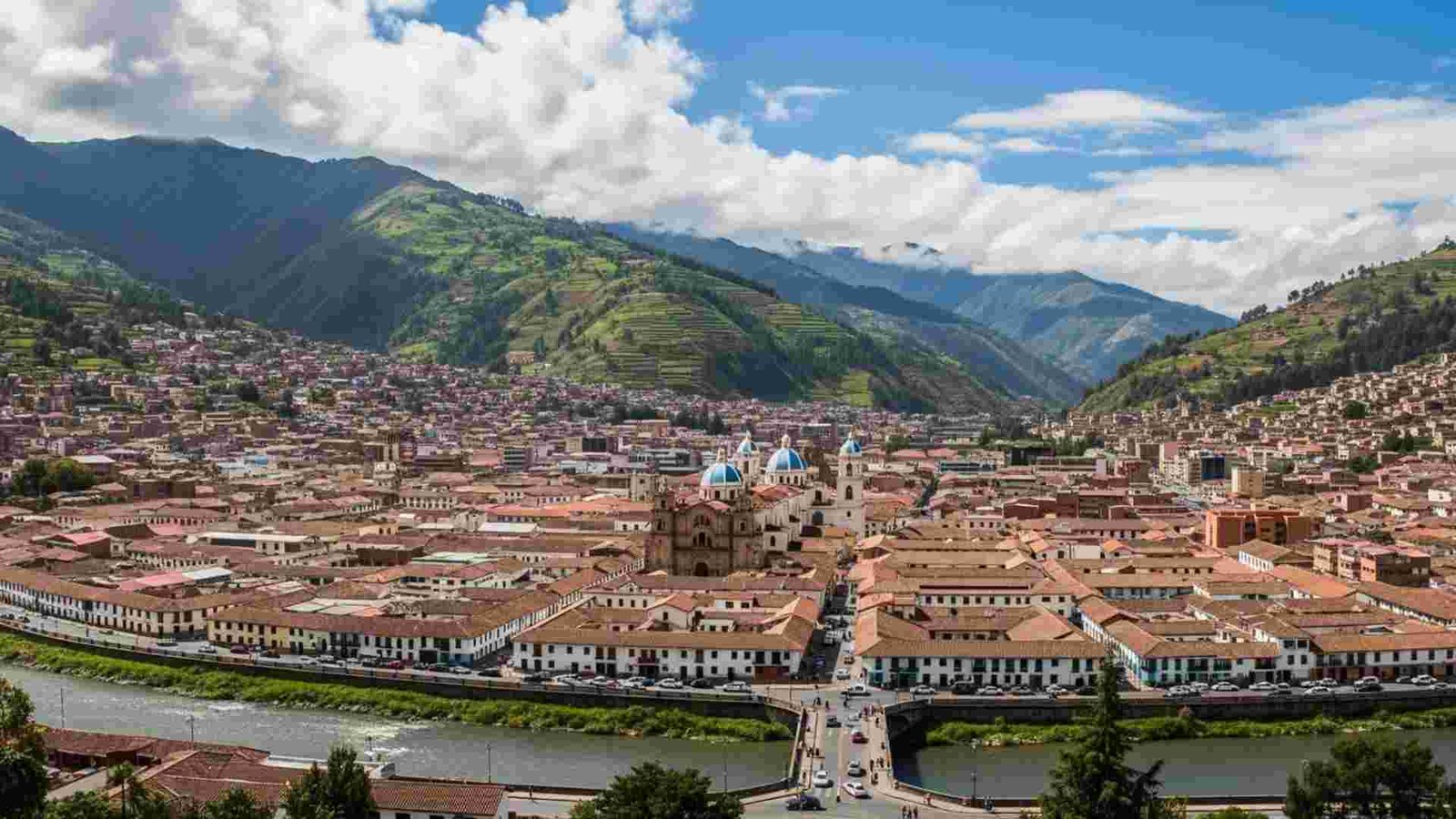
Cuenca feels like someone shrunk a European old town, dropped it in the Andes, and set the thermostat to permanent spring. The historic centre is UNESCO-listed, full of blue-domed cathedrals and narrow streets, while the Tomebamba River and surrounding hills give you easy “green space” when your brain needs a break from screens. Average temperatures sit roughly between 10–21 °C (50–70 °F) all year thanks to the city’s high elevation, so you’re never melting or freezing, just pulling on a light jacket at night.
it already has a strong expat and long-stay community, which means good coffee, solid healthcare, and Spanish schools, but it’s still very much a working Ecuadorian city. You can spend weekday mornings in class, stroll the flower market at lunch, then hop a bus at the weekend to Cajas National Park for misty lakes and páramo hikes. Cuenca often ranks high in “retirement city” lists partly because a frugal single person can live on under US$1,000 per month, while cost-of-living trackers show one-bedroom apartments in the centre averaging about US$250–500 per month.
Practical Information:
- When to Go: Year-round mild climate. June–September (crisp, cooler hiking weather).
- Where to Base Yourself: Near the Tomebamba River for greenery + walking paths. El Centro for historic charm. New Town for cafés + expat-friendly comforts.
- Getting Around: Walkable centre. Cheap buses across the city. Taxis at very affordable rates. Day-trip buses to Cajas National Park.
- Must-Do Slow Travel Moments: Morning strolls along the river. Spanish classes + market shopping. Weekend hikes in Cajas National Park.
8. Tirana, Albania – Post-communist energy with mountain escapes

Tirana is the wild card in your slow-travel list. It’s not polished like Western capitals and that’s the charm. You’ve got Skanderbeg Square with its museums and mosques, brutalist leftovers from the communist era, and those famous bunkers turned into contemporary museums (Bunk’Art 1 and 2) where you can process some of the country’s tougher history at your own pace. Recent articles call Tirana one of Europe’s more “unknown” capitals, which is great news if you’re burnt out on crowds.
What really helps with burnout is how quickly you can step out of the city thrum. A short bus ride takes you to the Grand Park and Artificial Lake, a 289-hectare green lung used by locals for runs, picnics and slow walks. Then there’s Mount Dajti National Park overlooking the city; a cable car gets you up into cooler air and forest trails where temperatures average around 12 °C at 1,000 m, a relief when summer in Tirana itself hits high 30s or around 90 °F and recent heatwaves push 40 °C.
Practical Information:
- When to Go: April–June and September–October. July–August (regular heat spikes).
- Where to Base Yourself: Blloku for cafés and nightlife. Near Artificial Lake Park for peaceful mornings. Pazari i Ri for markets + local energy.
- Getting Around: Buses for cheap transport. Taxis/ride-shares are affordable. Cable car to Mount Dajti for fresh-air resets.
- Must-Do Slow Travel Moments: Morning espresso in Blloku. Evenings around the lake. Easy weekend escapes to Bovilla or Mt. Dajti.
9. Sarajevo, Bosnia and Herzegovina – History, mountains, and a real pause button
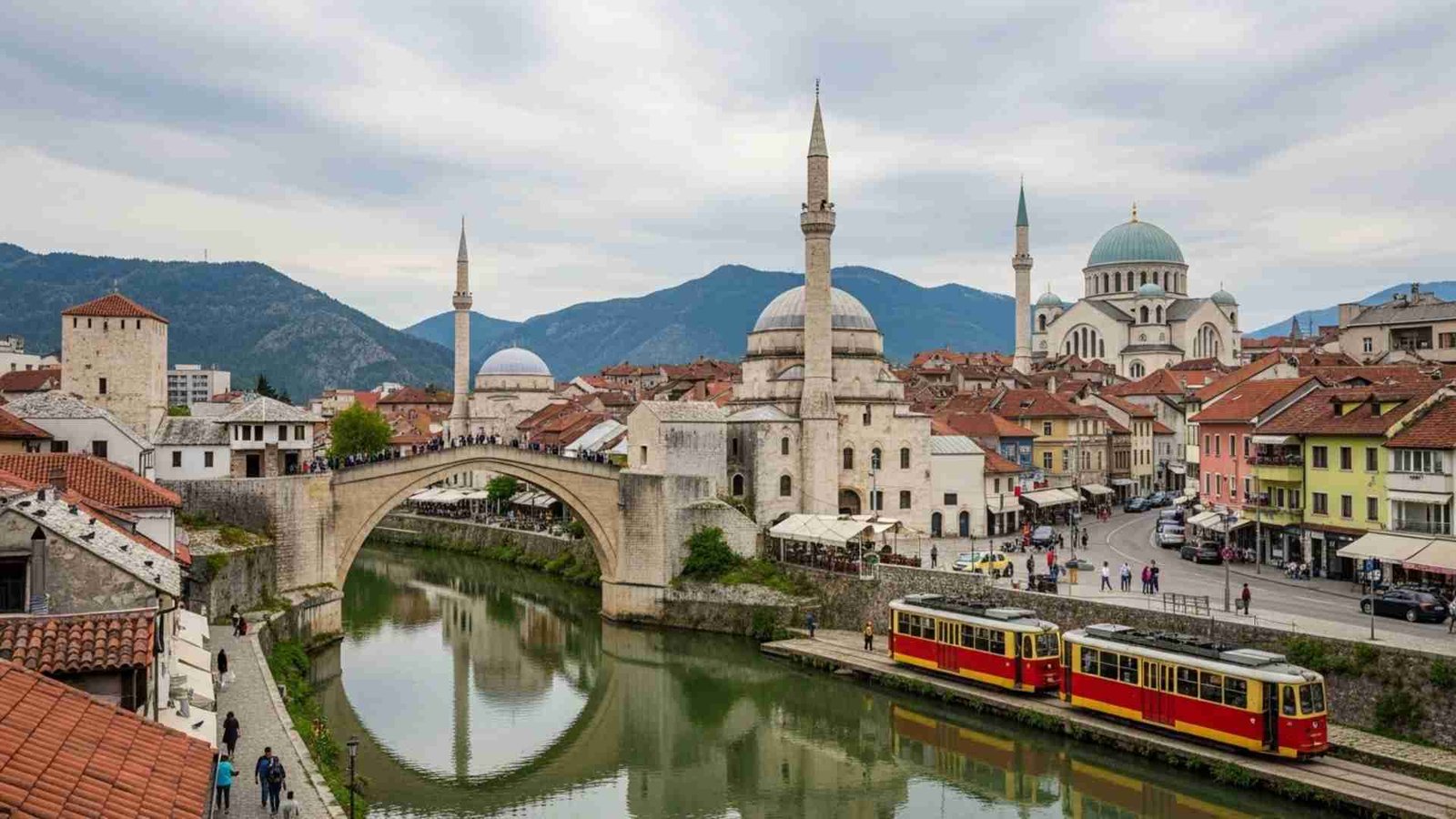
Sarajevo might be the most emotionally charged city on your list, and that’s exactly why a longer stay works. In the space of a short walk you pass mosques, churches and synagogues clustered in the Baščaršija old bazaar, see “Sarajevo roses” (mortar scars filled with red resin), and can visit the Tunnel of Hope that fed the city during the siege. Long-form travel pieces describe Sarajevo as a place where coexistence and trauma sit side by side, and giving yourself a month means you can absorb that slowly instead of rushing through memorials in a day.
For burnout, you also get quick access to nature. The hills start almost at the edge of town, and mountain resorts like Jahorina and Bjelašnica have been pivoting to more summer hiking and biking as winters warm, so you’re not limited to ski season. Spring and early autumn are sweet here: guides highlight April–June and September–October for mild temperatures, fewer crowds, and café terraces full of locals soaking up sun after long winters.
Practical Information:
- When to Go: April–June and September–October. December–February (cold + seasonal pollution).
- Where to Base Yourself: Baščaršija for old-town charm. Marijin Dvor for more modern cafés. Near tram lines for easy mobility.
- Must-Do Slow Travel Moments: Slow coffee culture (“ćejf” is a ritual). Day hikes starting right at the city edge. Soft exploration of war history at your own pace
10. Brașov, Romania – Forest town with a Gothic skyline
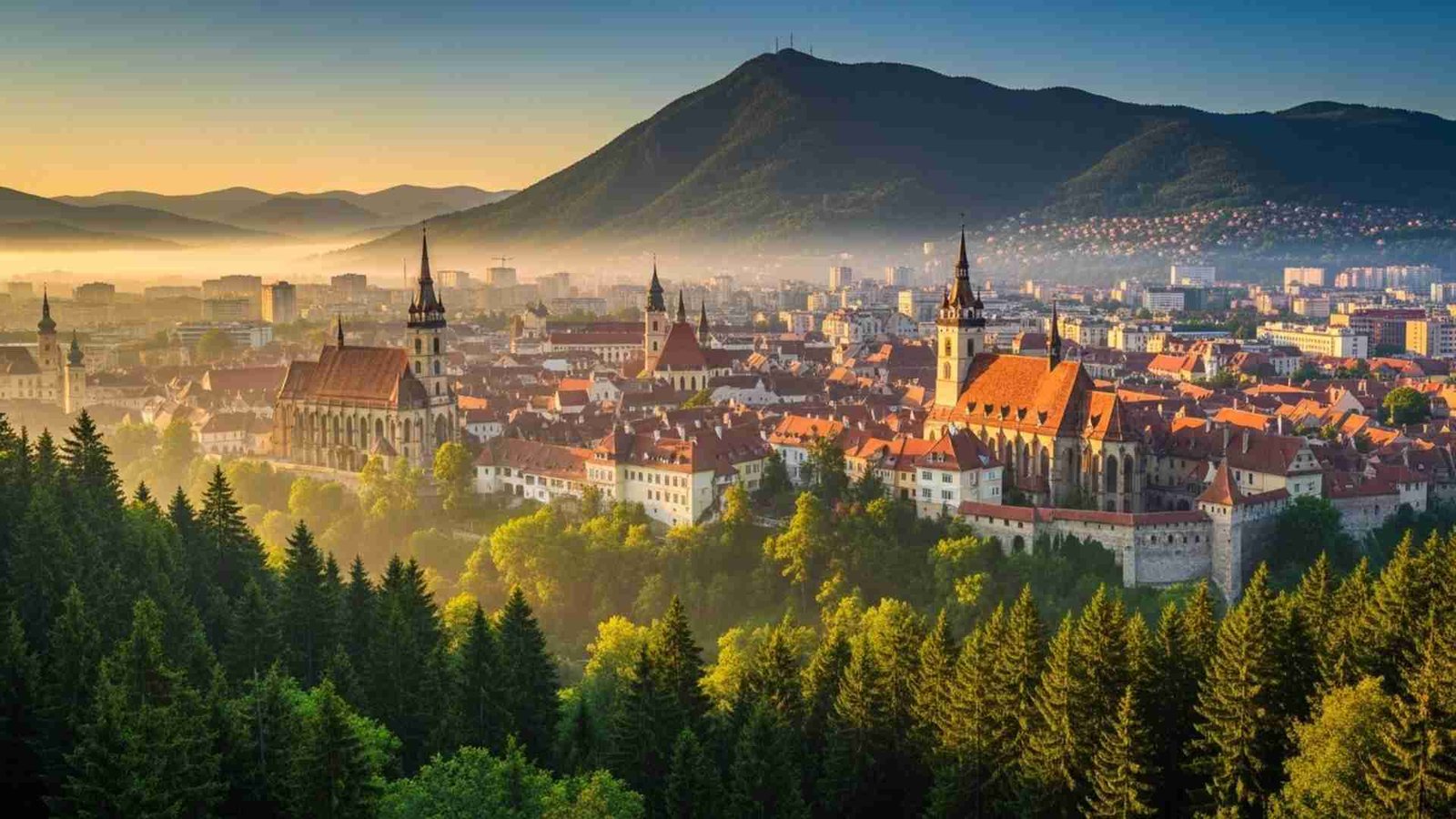
A Gothic black church, pastel townhouses around Council Square, and the green mass of Tâmpa Mountain looming behind it. Stay longer, and you realise it works beautifully as a “soft base” for exploring Transylvania while still feeling like a real town where people go to work and kids walk to school. It’s much smaller and calmer than Bucharest, and current comparisons suggest overall costs are about 18 % lower than the capital, so your month-long budget stretches further.
Instead of treating Brașov as a one-night stop to see Bran Castle, you can use it as a hub for gentle resets weekday mornings in a café near the square, afternoons walking the medieval city walls or taking the cable car up Tâmpa for forest air, weekends in nearby Râșnov, Bran, or the Piatra Craiului and Bucegi mountains. Romania travel guides point to April–June and September–October as ideal across the country, with May and September often singled out for comfortable temperatures, fewer tourists and colourful landscapes. That timing also keeps you away from the coldest winter snaps.
Practical Information:
- When to Go: May–June & September–October. December–February if you want mild weather.
- Where to Base Yourself: Near Council Square (Piața Sfatului) for cafés + walkability. Schei district for quiet, mountain-side charm. New areas near the train station for lower rents.
- Getting Around: Walk the old town. Use buses for longer routes. Cable car up Tâmpa Mountain for nature breaks. Trains to Bran, Râșnov, Sinaia, Sighișoara.
11. Granada, Spain – The “Quiet Corners” City Hiding in Plain Sight
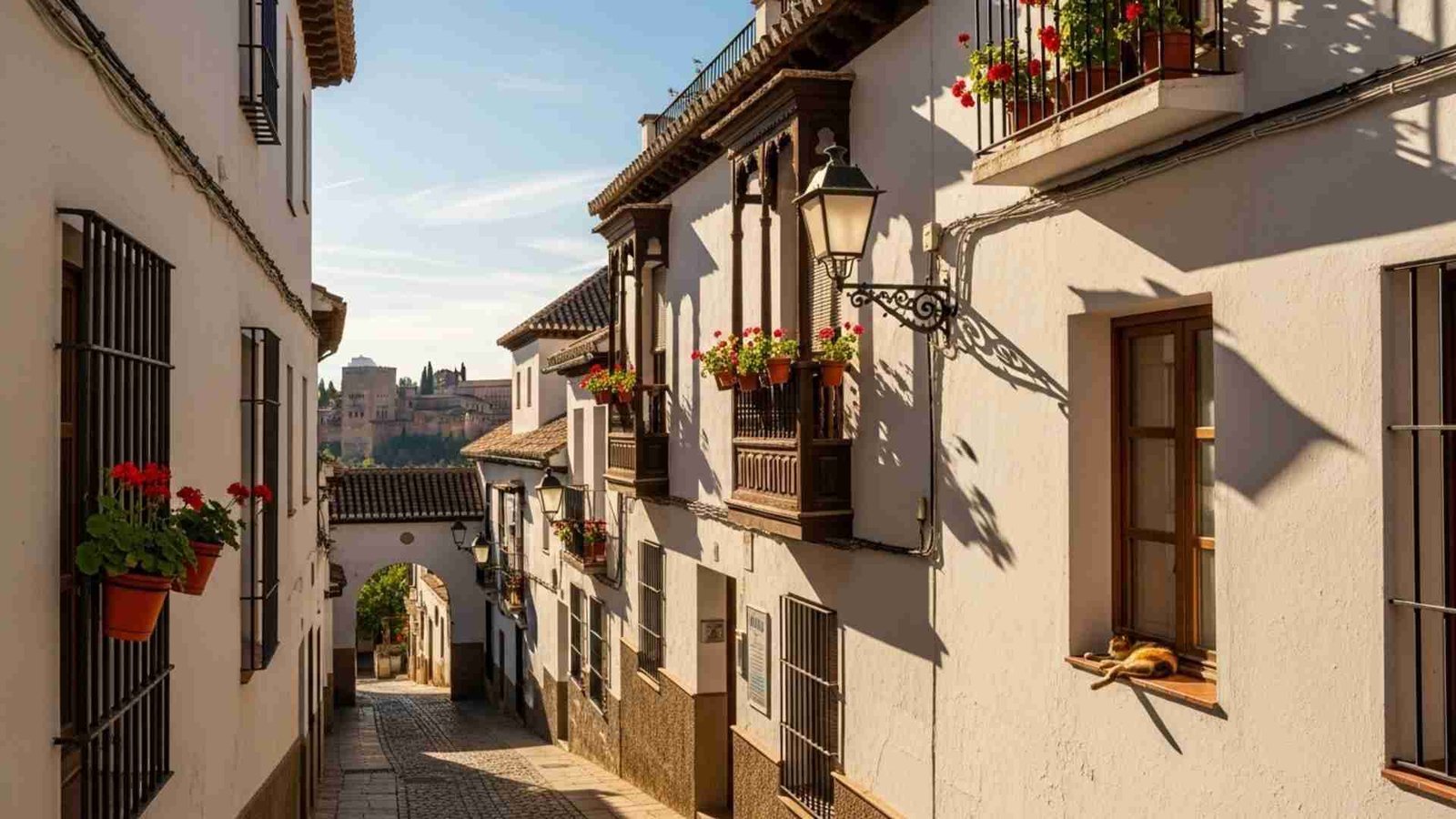
Granada usually enters the conversation because of the Alhambra, but stay a month and the real Granada starts to show up in the spaces between the famous sights. It’s the mornings when you wander the Carmen de los Mártires gardens and share the pathways only with gardeners and parrots. Or the evenings when you slip into an unnamed tetería (tea house) in the Albaicín and sip mint tea while Arabic oud music floats in the background. What people rarely mention is how many calm pockets Granada has. A burnout-friendly city disguised as a major cultural hub.
Here’s something most short-term visitors miss: the Realejo district. It’s where you’ll find street art by El Niño, tiny plazas with orange trees, and tapas bars where locals linger long after midnight. You’ll feel less like a tourist and more like someone who happened to adopt a Mediterranean rhythm overnight. And because Granada’s geography slides from mountain foothills to Moorish lanes, you can set a daily routine: hillside sunrise walk, slow lunch, late-night flamenco.
Practical Notes:
- Weekend reset: hop a bus to Monachil and walk the Los Cahorros Gorge. Suspension bridges + river breezes = nervous system reset.
- If you want quiet: live between Realejo and Campo del Príncipe. Cheaper rent, softer evenings.
- Want a grounding ritual? Walk up to San Miguel Alto at golden hour. It’s a steep climb, but the city lights feel like a reward you earned.
- Your budget breathes here: tapas culture means every drink comes with food, so dinners become a slow, inexpensive ritual.
12. Las Palmas de Gran Canaria, Spain – Europe’s “Island City” Made for Long Breathers
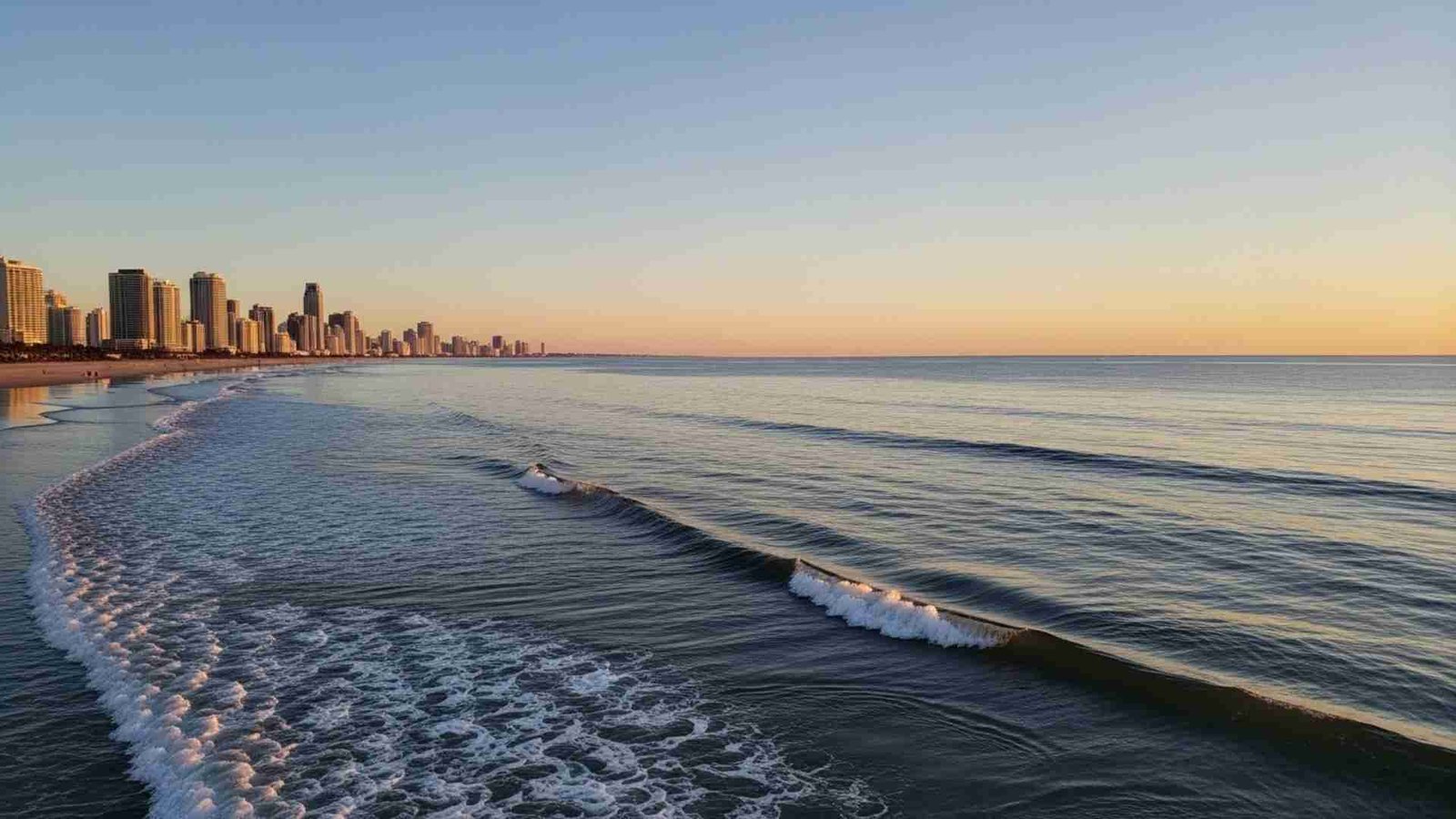
Las Palmas is one of those places where your brain finally unclenches, partly because the island climate is consistently kind and partly because locals treat everyday life like an art form. The city blends beach living, Spanish culture, and island ease in a way that feels almost engineered for long stays. The microclimate around Las Canteras Beach gives you sunny, mild days nearly year-round, so your daily routine can include ocean swims even in winter.
What you won’t expect is how liveable the city is for a full month. There’s a long seaside promenade where you’ll join cyclists, runners, and families enjoying an unhurried lifestyle. The Guanarteme district has indie cafés and creative co-working spaces tucked between surf shops. And because it sits on the north side of the island, you get Atlantic breezes instead of harsh heat — ideal if the whole point of your trip is to breathe easier.
Practical Notes:
- Week 1: Settle by staying near Las Canteras. Swim every morning. Learn the rhythm of the waves.
- Week 2: Explore hill towns like Teror and Arucas — quiet squares, cool air, pine forests.
- Week 3: Join locals in the markets. The Mercado del Puerto is where your slow mornings become a habit.
- Week 4: Road trip the island’s volcanic heart: Roque Nublo, Tejeda, and sunset at Mirador Pico de las Nieves.
13. Antalya, Türkiye – The “Two-Speed City” Where History Meets Resort Calm
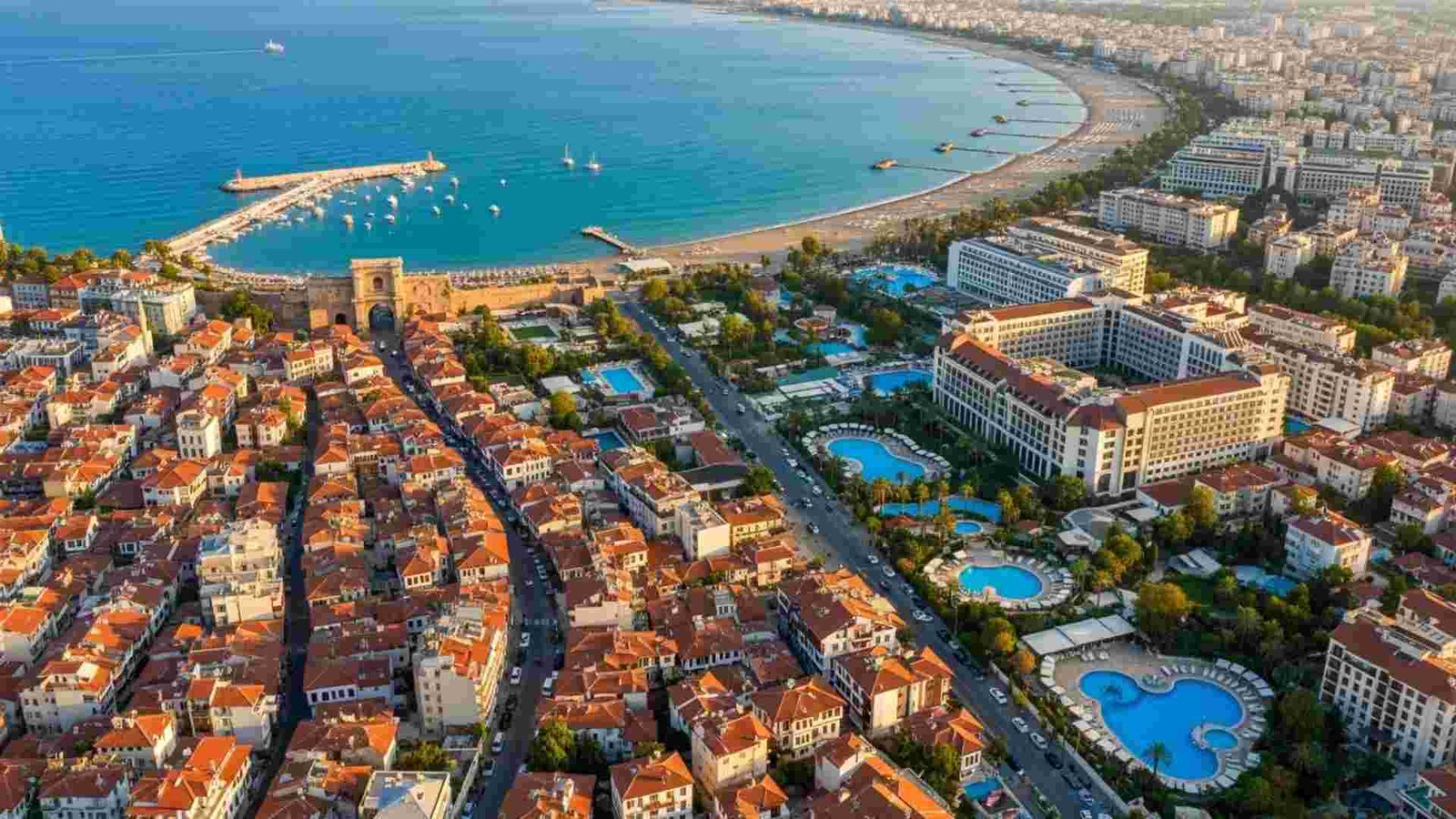
Antalya is often labelled a beach destination, but stay long enough and you’ll discover it moves in two distinct speeds — which is a gift for anyone recovering from burnout. The Kaleiçi old town gives you cobbled alleys, Ottoman mansions, and ancient harbour views. Step outside that zone and suddenly you’re in a modern Mediterranean city with parks, trams, cheap eats, and mountain views. You can switch between these worlds depending on your energy level.
Düden, Kursunlu, Manavgat — each one feels like nature’s reset button. And because the Taurus Mountains hug the coastline, you’re never more than a short drive away from cool air, pine forests, and riverside cafés where you can spend an entire afternoon doing nothing. Antalya’s pace lets you choose: ancient or modern, beach or canyon, crowds or solitude.
Practical Notes:
- Social day: Join a dive tour or a boat trip along the cliffs.
- Low-energy day: Breakfast in Kaleiçi, wander the harbour, nap, sunset at Mermerli Beach.
- Creative day: Tram to Konyaaltı, work from a beach café, cool off in the sea, walk the promenade.
- Exploration day: Rent a car and visit Kursunlu Waterfall or Termessos (ancient ruins in the mountains).
14. Lake Atitlán, Guatemala – A Patchwork of Villages for Every Mood
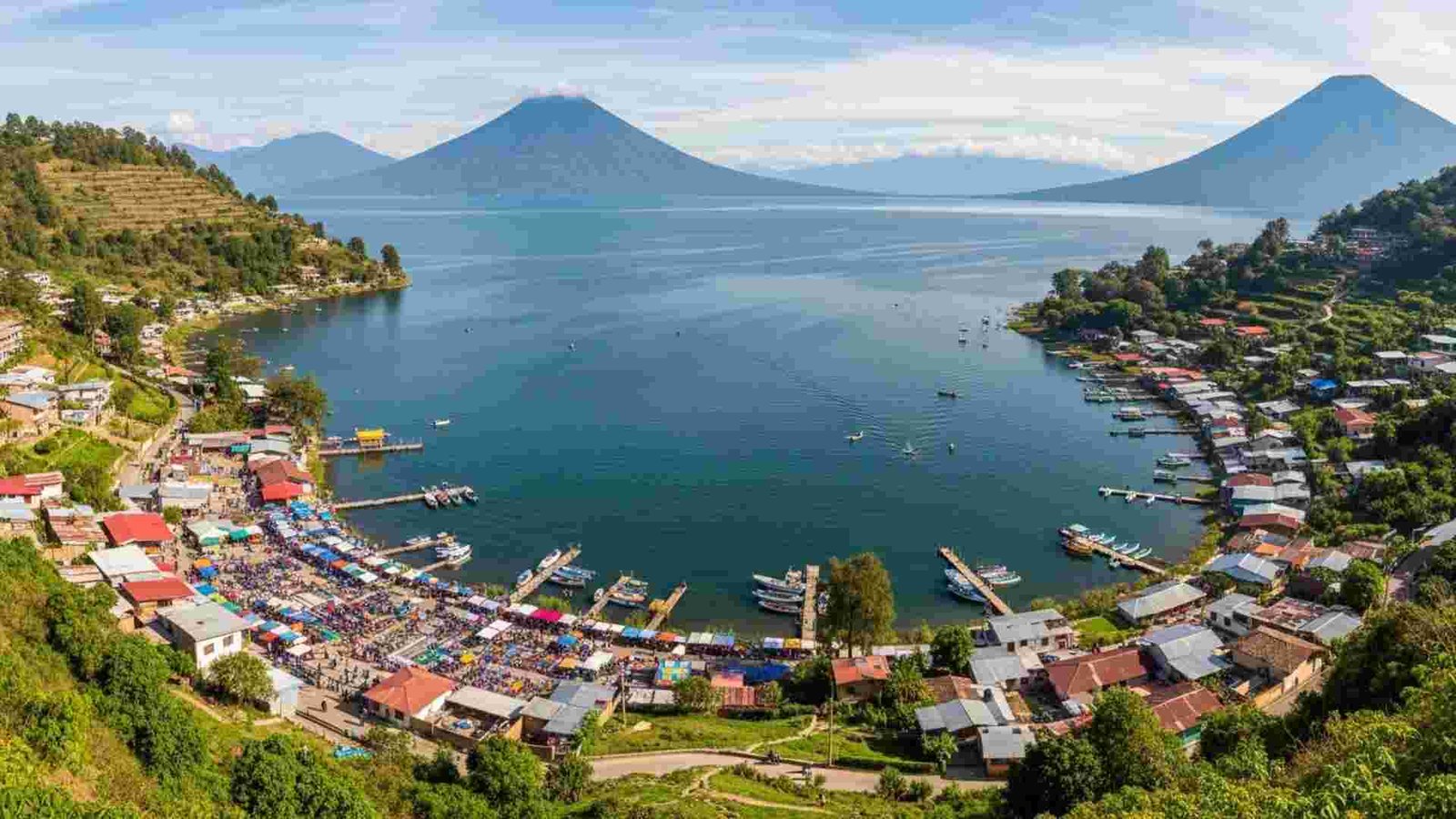
Lake Atitlán isn’t a single destination it’s a ring of small villages, each with its own personality, all centered around a volcanic lake that feels like something sacred. The reason slow travelers stay here for a month isn’t just the landscape — it’s the subtle psychological shift that comes from moving by boat instead of roads. You literally have to slow down because the lake decides your schedule.
The hidden gems are the villages you might skip if you only stayed two days. San Marcos gives you retreat culture, yoga shalas, and late-night cacao ceremonies. San Pedro is lively and social, while Santa Cruz offers pure silence and steep stairways leading to remote eco-lodges. If you need a burnout cure, this choose-your-energy setting is perfect — the lake holds space for both connection and solitude.
Practical Notes:
- You want balance: Panajachel — boat hub, markets, cafés.
- You want quiet: Stay in Santa Cruz or Jaibalito.
- You want social energy: Base in San Pedro.
- You want wellness + introspection: San Marcos La Laguna.
Conclusion:
Burnout doesn’t fix itself just because you squeeze in a long weekend. It shifts when you give yourself enough time to unpack, breathe, and actually live somewhere new for a while. These 14 destinations prove you don’t need a luxury budget to do that – just a month, a simple base, and a slower rhythm. Pick the place that matches your energy right now, build small daily rituals around it, and let the change of pace do its quiet work on you.


